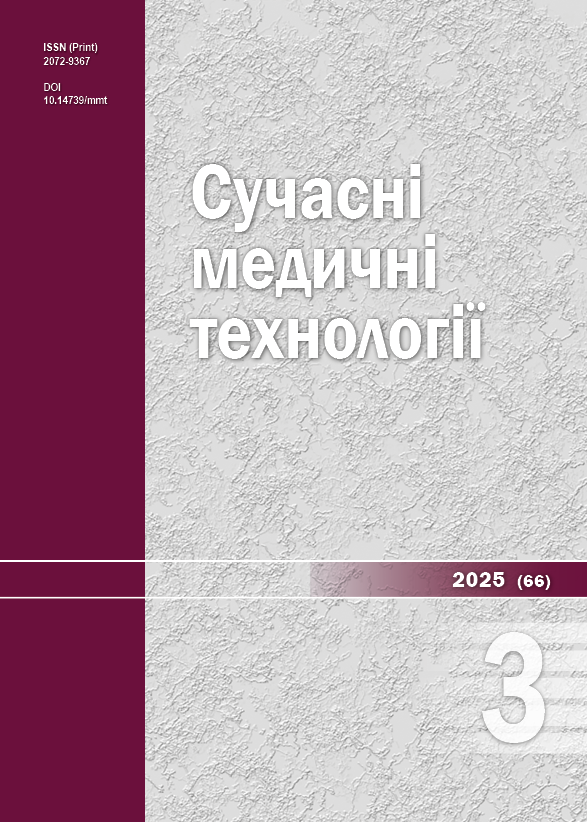Experience in improving the results of treating scalp defects using the FUE method with DHI
DOI:
https://doi.org/10.14739/mmt.2025.3.332959Keywords:
alopecia cicatrisata, scalp reconstruction, hair transplantation, FUE, DHI, graft, hair follicleAbstract
Aim. Improvement of scalp defect treatment results using hair transplantation technology by follicular unit extraction and direct hair implantation methods.
Materials and methods. A 50-year-old patient complained of multifocal post-burn alopecia of the scalp and left eyebrow. Hair restoration was performed using hair transplantation using the FUE (Follicular Unit Extraction) method with DHI (Direct Hair Implantation). The results were evaluated using an objective criterion (percentage of hair engraftment), as well as the subjective criterion of patient satisfaction with the result using a total score scale (Likert scale), which was adapted according to the tasks of the work.
Results. The final result was evaluated one year after hair transplantation. The patient noted an acceptable result (4 points). A second session of hair transplantation was performed in the intervals between the already grown grafts to achieve a uniform effect.
Conclusions. Hair transplantation can be used to restore scalp hair in cases where the use of local flaps and tissue extension is limited (multifocal scarring and postoperative alopecia), as well as a secondary procedure after primary closure of the defect with non-vascularized skin grafts or distance flaps. FUE hair transplant with DHI allows you to restore the natural angle and direction of hair growth, even in aesthetically difficult areas such as the front hairline, crown, eyebrows, and achieve hair growth density that is almost identical to natural.
References
Krishna D, Khan MM, Dubepuria R, Chaturvedi G, Cheruvu VP. Reconstruction of Scalp and Forehead Defects: Options and Strategies. Cureus. 2023;15(7):e41479. doi: https://doi.org/10.7759/cureus.41479
Namin AW, Tassone PT, Galloway TL, Renner GJ, Chang CW. Scalp and Forehead Injury: Management of Acute and Secondary Defects. Facial Plast Surg. 2021;37(4):454-62. doi: https://doi.org/10.1055/s-0041-1722914
Trott S, Hellums R, Wax MK. Scalp Reconstruction. Facial Plast Surg Clin North Am. 2025;33(1):85-93. doi: https://doi.org/10.1016/j.fsc.2024.07.006
Mohamed Mohamed ME, Kotb MOA. Tissue Expanders for Hair Restoration in the Scalp: Overexpansion Does Matter. Plast Reconstr Surg Glob Open. 2024;12(10):e6222. doi: https://doi.org/10.1097/GOX.0000000000006222
Jiang W, Chen L, Jia L, Wang M, Wang B. Corrective strategies for poor appearance after tissue expansion for temporal and sideburn cicatricial alopecia. J Cosmet Dermatol. 2021;20(12):4001-4. doi: https://doi.org/10.1111/jocd.14067
Yoo H, Moh J, Park JU. Treatment of Postsurgical Scalp Scar Deformity Using Follicular Unit Hair Transplantation. Biomed Res Int. 2019;2019:3423657. doi: https://doi.org/10.1155/2019/3423657
Evin N, Guray Evin S. Camouflage of Postburn Scarring Alopecia Using Nanofat Grafting and Follicular Unit Hair Transplantation. Plast Reconstr Surg. 2024;154(1):207-15. doi: https://doi.org/10.1097/PRS.0000000000010759
Jin F, Wang Y, Wang Y, Qi H, Wang J. Treatment of scarring alopecia in children using follicular unit hair transplantation. Pediatr Dermatol. 2022;39(2):333-7. doi: https://doi.org/10.1111/pde.14928
Nuri T, Abe N, Sakamoto A, Tsushima A, Kasai Y, Narui Y, et al. Treatment of scarring alopecia from trauma and surgical procedures in young patients using follicular unit hair transplantation. Pediatr Dermatol. 2021;38(3):721-3. doi: https://doi.org/10.1111/pde.14553
Han MW, Moh J, Park JU. Hair Transplantation on the Baldness Region with Free Latissimus Dorsi Flap for Scalp Reconstruction: A Case Report. Arch Plast Surg. 2024;52(1):36-40. doi: https://doi.org/10.1055/s-0044-1787186
Sahin B. Reconstruction of large alopecia with old technique: V-Y-S plasty. Int Wound J. 2016;13(5):984-5. doi: https://doi.org/10.1111/iwj.12259
Di Mascio D, Sapino G, De Maria F. Telogen Effluvium as a complication of scalp reconstruction with tissue expander: a case report. Acta Biomed. 2021;92(S1):e2021431. doi: https://doi.org/10.23750/abm.v92iS1.12066
Shikara M, Waghmarae S, Vakharia KT. Closure of a Large Scalp Defect Using External Tissue Expansion. J Craniofac Surg. 2023;34(1):e34-e36. doi: https://doi.org/10.1097/SCS.0000000000008911
Zhang Q, Xu L, Liu Y, Tang X, Wang J, Deng Y, et al. Application of Skin-stretching Device for Closing Scalp Defect. J Craniofac Surg. 2023;34(1):374-80. doi: https://doi.org/10.1097/SCS.0000000000008856
Dai JJ, Wang L, Qiu HY, Huang XY, Tian YX, Peng Q, et al. [Clinical effects of autologous follicular unit extraction transplantation in the treatment of small area secondary cicatricial alopecia after burns]. Zhonghua Shao Shang Yu Chuang Mian Xiu Fu Za Zhi. 2022;38(6):532-7. Chinese. doi: https://doi.org/10.3760/cma.j.cn501120-20210224-00064
Downloads
Additional Files
Published
How to Cite
Issue
Section
License
Copyright (c) 2025 O. A. Hyndych

This work is licensed under a Creative Commons Attribution-NonCommercial 4.0 International License.
The work is provided under the terms of the Public Offer and of Creative Commons Attribution-NonCommercial 4.0 International (CC BY-NC 4.0). This license allows an unlimited number of persons to reproduce and share the Licensed Material in all media and formats. Any use of the Licensed Material shall contain an identification of its Creator(s) and must be for non-commercial purposes only.














